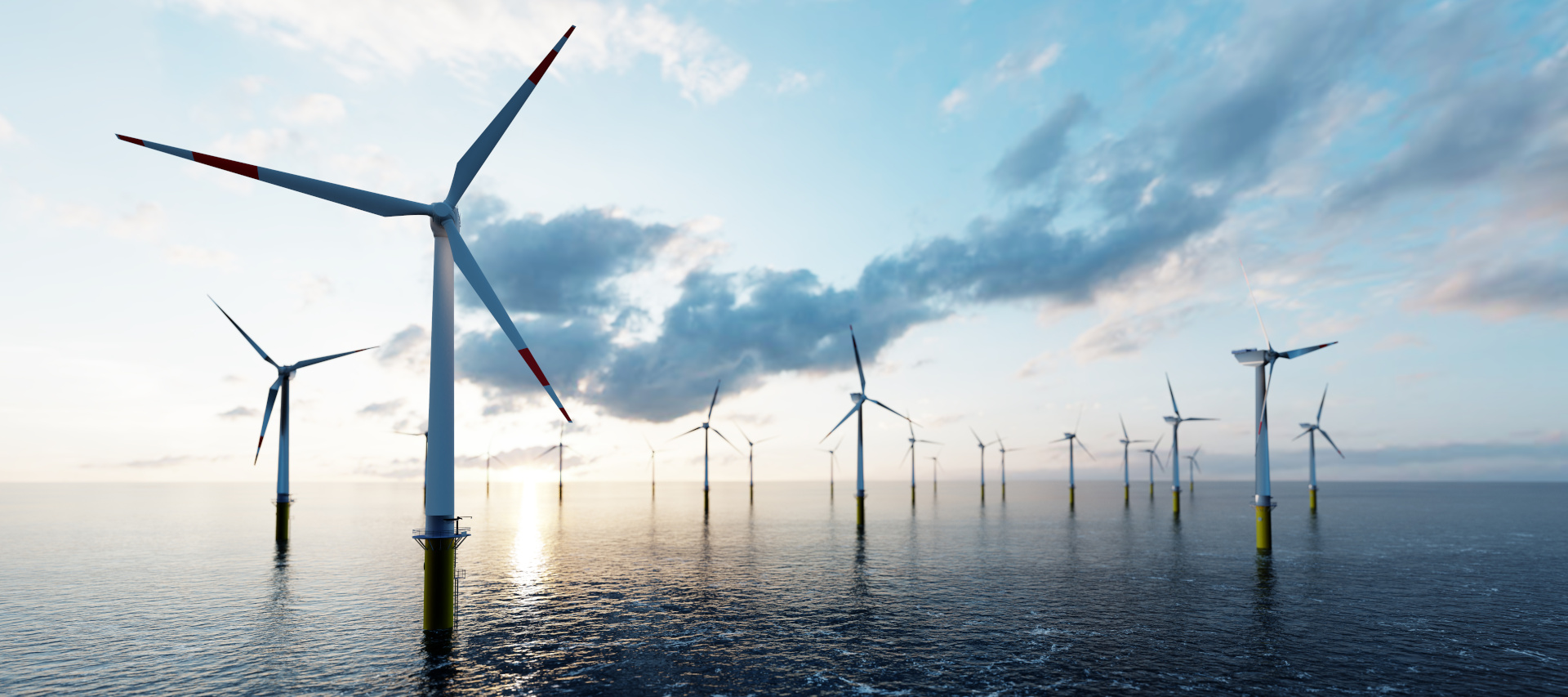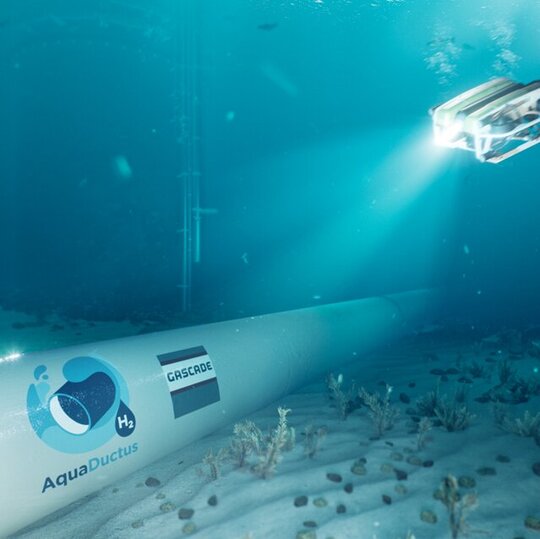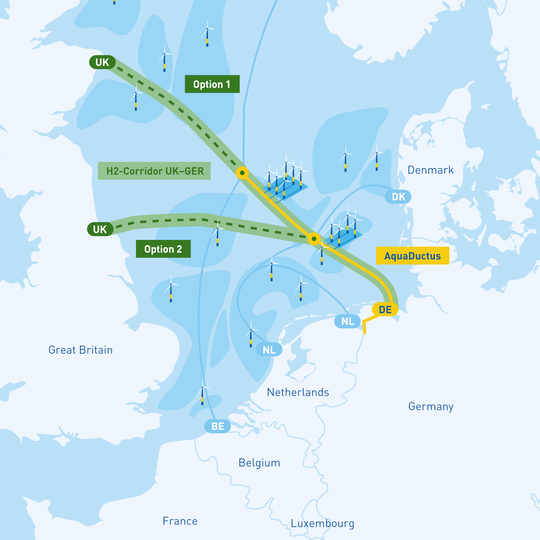With the program Flow – making hydrogen happen, and the projects AquaDuctus, Interconnector Bornholm–Lubmin, and UK-Germany Hydrogen Interconnector, GASCADE is driving forward the expansion of a high-performance hydrogen infrastructure in Germany and Europe. Our goal: An efficient, cross-border hydrogen transport system that intelligently connects energy production, industry, and climate protection.
The planned 140-km-long cross-border pipeline from Bornholm in Denmark to Lubmin in Germany will connect the large-scale hydrogen production on Bornholm with large demand centres in Germany and Central Europe. The German-Danish cooperation project entails building the first hydrogen pipeline in the Baltic and an application for PCI (Project of Common Interest) status has been submitted to the EU. At the same time, it makes a significant contribution to the creation of an EU-wide hydrogen network that will enable hydrogen transport for a host of network users.
A link to the Baltic Sea Hydrogen Collector is possible. The Interconnector Bornholm-Lubmin is scheduled to go into operation in 2029. The 42-inch pipeline is expected to be transport more than 4 GW by 2030 and, at the same time, enable additional capacity of up to 10 GW – a catalyst for developing further offshore wind energy in the region.
The UK-Germany Hydrogen Corridor will provide transport capacity for up to 20 gigawatts of hydrogen. It will operate on a bidirectional basis, offering enhanced flexibility and security of supply for both the Great Britain and EU hydrogen markets. It aligns strategically with European initiatives to build a robust hydrogen economy, accelerating the green energy transition and decarbonisation through the supply of green and low-carbon hydrogen, while also significantly enhancing UK and EU energy independence.
Both GASCADE and National Gas aim to pursue Project of Common Interest (PCI) or Project of Mutual Interest (PMI) status for the project, underscoring the strategic importance of this project within European energy policy frameworks. They also intend to incorporate the project into the European Ten-Year Network Development Plan (TYNDP) 2026.
Pomeranian Green Hydrogen Cluster
Project description
The project aims to investigate the possibilities of green hydrogen production in the West Pomeranian region and a connection to the Polish and German hydrogen network.
Project partners
The project is being implemented in cooperation with GAZ-System, PNE AG, Sevivon (PNE Group) and GASCADE.

CEF RES co-financing
As part of the funding competition “Call for Preparatory Studies for Cross-border Renewable Energy Projects” (CEF RES), the project partners submitted an application for funding for feasibility studies entitled “Business Analysis of the cross-border Pomeranian Green Hydrogen Cluster”. On July 4, 2024, the project was awarded funding in the amount of 190,000 euros. The feasibility studies are supported and funded by the European Commission as part of the “Connecting Europe Facility - CEF” program.
GASCADE will receive 65,000 euros in funding on a pro rata basis, current status: 32,500 euros received.
Timetable
- July 2024: CEF funding promised
- March 2025: Commissioning of a feasibility study
- Summer 2025: Results of the feasibility study are expected
Last Update: 2 April 2025






![[Translate to Englisch:]](/fileadmin/_processed_/d/9/csm_Flandrich_Dirk_725e9a384d.png)
![[Translate to Englisch:]](/fileadmin/_processed_/6/0/csm_Reimuth_Oliver_8cbbd4dbb4.png)
